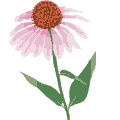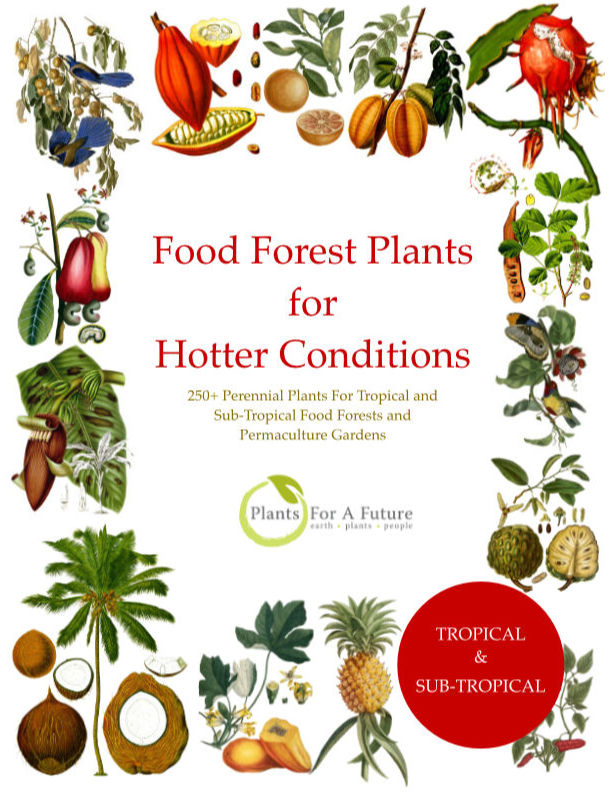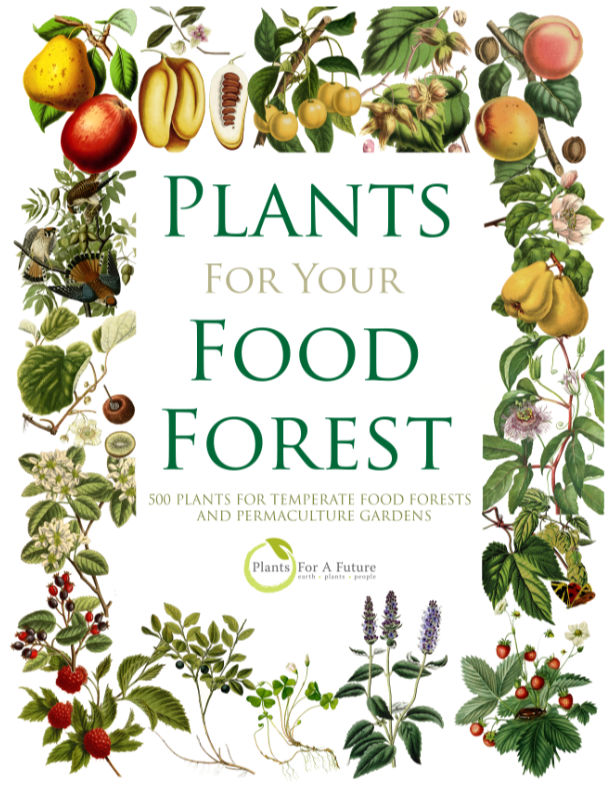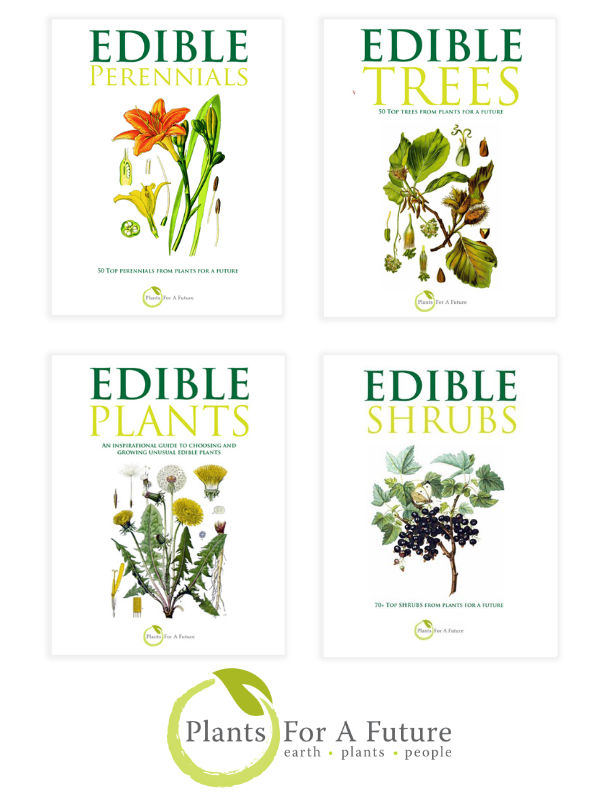Translate this page:
Summary
Plantago major,
Common plantain is a versatile plant used for centuries for food and healing. Young leaves are eaten raw or cooked but are often bitter and require preparation to make them more palatable. The fibrous strands and leaf stalks are removed and blanched in boiling water before being used in salads to soften them. Dried leaves make tea. A Chinese variety of the plant produces more palatable leaves, which contain about 2.7% protein and 0.4% fat. The seeds can be eaten raw or cooked but are laborious to harvest. They are rich in vitamin B1 and are ground into a meal to mix with flour or boiled and used like sago. While the roots are also edible, there are no specific details about their preparation.
Common plantain effectively treats bleeding, quickly stopping blood flow and promoting the repair of damaged tissue. The leaves have a wide range of medicinal uses, including acting as an astringent, demulcent, deobstruent, depurative, diuretic, expectorant, haemostatic, and refrigerant. It has been traditionally used to treat wound healing and inflammation.
Although it is often seen as a common garden weed, some cultivated forms of common plantain have been selected for their ornamental value. Common plantain is a hardy and resilient plant that can thrive in various conditions. It is native to many regions, including Afghanistan, Algeria, Austria, Cyprus, France, Germany, Great Britain, Greece, Hungary, Italy, Morocco, Spain, Tunisia, and Turkey. Common plantain is an important food source for caterpillars of many butterfly species and is a dynamic accumulator.
Harvesting: Leaves throughout the growing season, but the best time is from spring to early summer. Bloom Color: Green. Main Bloom Time: Early summer, Late summer, Mid summer. Form: Irregular or sprawling.
Physical Characteristics

 Plantago major is a PERENNIAL growing to 0.1 m (0ft 4in) by 0.1 m (0ft 4in) at a fast rate.
Plantago major is a PERENNIAL growing to 0.1 m (0ft 4in) by 0.1 m (0ft 4in) at a fast rate.
See above for USDA hardiness. It is hardy to UK zone 5 and is not frost tender. It is in flower from May to September, and the seeds ripen from July to October. The species is hermaphrodite (has both male and female organs) and is pollinated by Wind. The plant is self-fertile.
It is noted for attracting wildlife.
Suitable for: light (sandy), medium (loamy) and heavy (clay) soils and prefers well-drained soil. Suitable pH: mildly acid, neutral and basic (mildly alkaline) soils. It cannot grow in the shade. It prefers moist soil. The plant can tolerate maritime exposure.
UK Hardiness Map
US Hardiness Map
Synonyms
Plantago borysthenica. Plantago dregeana. Plantago latifolia. Plantago sinuata.
Plant Habitats
Lawn; Meadow;
Edible Uses
Edible Parts: Leaves Root Seed
Edible Uses: Tea
Young leaves - raw or cooked[2, 5, 12, 56, 62, 183]. They are rather bitter and tedious to prepare because the fibrous strands need to be removed before use[9]. It is best not to use the leaf-stalk since this is even more fibrous than the leaf[183]. Many people blanch the leaves in boiling water before using them in salads in order to make them more tender[183]. A Chinese form has more palatable leaves - it contains about 2.7% protein, 0.4% fat, 2.2% ash[179]. Seed - raw or cooked[62, 172]. Very tedious to harvest[172]. The seed can be ground into a meal and mixed with flour[183]. It is very rich in vitamin B1[179]. The whole seeds can be boiled and used like sago[193]. The dried leaves make an acceptable tea[183]. Root[183]. No further details.
References More on Edible Uses
Medicinal Uses
Plants For A Future can not take any responsibility for any adverse effects from the use of plants. Always seek advice from a professional before using a plant medicinally.
Antidote Astringent Demulcent Deobstruent Depurative Diuretic Expectorant Haemostatic
Laxative Ophthalmic Poultice Refrigerant Vermifuge
Common plantain is a safe and effective treatment for bleeding, it quickly staunches blood flow and encourages the repair of damaged tissue[254]. The leaves are astringent, demulcent, deobstruent, depurative, diuretic, expectorant, haemostatic and refrigerant[4, 7, 9, 21, 147, 165, 172, 238]. Internally, they are used in the treatment of a wide range of complaints including diarrhoea, gastritis, peptic ulcers, irritable bowel syndrome, haemorrhage, haemorrhoids, cystitis, bronchitis, catarrh, sinusitis, asthma and hay fever[238, 254]. They are used externally in treating skin inflammations, malignant ulcers, cuts, stings etc[4]. The heated leaves are used as a wet dressing for wounds, swellings etc[213, 222]. The root is a remedy for the bite of rattlesnakes, it is used in equal portions with Marrubium vulgare[207]. The seeds are used in the treatment of parasitic worms[213]. Plantain seeds contain up to 30% mucilage which swells up in the gut, acting as a bulk laxative and soothing irritated membranes[238]. Sometimes the seed husks are used without the seeds[238]. A distilled water made from the plant makes an excellent eye lotion[7].
References More on Medicinal Uses
The Bookshop: Edible Plant Books
Our Latest books on Perennial Plants For Food Forests and Permaculture Gardens in paperback or digital formats.

Edible Tropical Plants
Food Forest Plants for Hotter Conditions: 250+ Plants For Tropical Food Forests & Permaculture Gardens.
More

Edible Temperate Plants
Plants for Your Food Forest: 500 Plants for Temperate Food Forests & Permaculture Gardens.
More

More Books
PFAF have eight books available in paperback and digital formats. Browse the shop for more information.
Shop Now
Other Uses
Agroforestry uses:
Plantago major can be used as a ground cover, helping to prevent soil erosion and suppress weeds. It also provides habitat and food for beneficial insects.
Some named forms have been selected for their ornamental value[233]. An important food plant for the caterpillars of many species of butterflies[30]. Special Features: Edible, Naturalizing, Suitable for dried flowers. Dynamic accumulator. 1. Nectary - Flowers rich in nectar and pollen:
Yes – Common plantain produces flowers that can attract some pollinators, although they are not a primary nectar source compared to other flowering plants.
2. Wildlife - Food (Fruit, Seeds, Leaf litter, Shelter, Nesting, Roosting):
Yes – The young leaves are edible for humans and can also provide food for various herbivores. The seeds can serve as food for birds. While the plant does not provide significant shelter or nesting sites, the dense foliage can offer some cover for small wildlife.
3. Invertebrate Shelter (Overwintering sites, Leaf litter, Groundcover):
Yes – Common plantain can provide habitat for beneficial insects, especially in its leaf litter and foliage. It can serve as ground cover, which helps support invertebrate populations.
4. Pest Confuser (Smell):
Yes – The plant’s leaves have a distinct aroma that may help deter some pests, contributing to a more balanced garden ecosystem.
Special Uses
Attracts Wildlife Dynamic accumulator Food Forest
References More on Other Uses
Cultivation details
Succeeds in any moderately fertile soil in a sunny position[200]. Although this species is a common garden weed, some named forms have been selected for their ornamental value[233]. Plantago major is self-fertile. The leaves can be harvested throughout the growing season, but the best time is from spring to early summer.
Plantago major typically flowers from late spring to summer, around May to July (Northern Hemisphere). Common plantain is a fast-growing plant that often establishes itself quickly in disturbed areas and thrives in various soil conditions.
References Carbon Farming Information and Carbon Sequestration Information
Temperature Converter
Type a value in the Celsius field to convert the value to Fahrenheit:
Fahrenheit:
The PFAF Bookshop
Plants For A Future have a number of books available in paperback and digital form. Book titles include Edible Plants, Edible Perennials, Edible Trees,Edible Shrubs, Woodland Gardening, and Temperate Food Forest Plants. Our new book is Food Forest Plants For Hotter Conditions (Tropical and Sub-Tropical).
Shop Now
Plant Propagation
Seed - sow spring in a cold frame. When they are large enough to handle, prick the seedlings out into individual pots and plant them out in early summer. A sowing can be made outdoors in situ in mid to late spring if you have enough seeds.
Other Names
If available other names are mentioned here
Common Plantain, Cart Track Plant, White Man's Foot Plantain, Plantain, Rat's Tails, Travellers Foot, Waybread, Cuckoo's Bread, Bolila ba lipoli, Broad-leafed plantain, Che qian, Cheuli, Daun sejumbok, Daun sendok, Ekur anjing, Ghuzbe, Gul, Isafghol, Karet, Kel-ba-an, Ki arut, Kopakopa, Llanten, Luhuriya, Ma de, Nido marto, Orecchie d'asino, Plantain, Pulung nyang, Sangka-buwah, Sangkubah, Teeleht, Tirafilo, Yempat, al-hamal al-kabeer, al-hazaza , bakayaprok, baltang, bartang, bokvica, breitwegerich, broad plantain, broad- plantain, broad-leaf plantain, broad-leaved plantain, broadleaf plantain, buckhorn plantain, buzchi, cart-track plant, charghoon, che qian cuo, chon baka zhalbyrak, common plantain, da che qian, folia plantaginis majoris, general plantain, grand plantain, great plantain, greater plantain, groblad, gros plantain, gula, khargholah, lahuriya, lantana-maior, large plantain, lisan abu al-a’meel, lisan al-hamal, llanten, llantén, llantén común, llantén major, llsan-ui-hamal, masasah, piantaggine, plantago major, plantain, plantain grand, plantain majeur, podorozhnik bol'shoy, podorožnik bol'šoj, ripple grass, rippleseed plantain, tanchagem, tanchagem-maior, warak saboun lisan al-kalb, waybread, wegerich, white-man's-foot, zanbul far, zanbul yarbooa, zupturoom, ženska bokvica.
Native Range
Afghanistan, Albania, Algeria, Altay, Amur, Austria, Baleares, Baltic States, Belarus, Belgium, Bulgaria, Buryatiya, Canary Is., Cape Provinces, Cape Verde, Central European Russia, China North-Central, China South-Central, China Southeast, Chita, Corse, Cyprus, Czechoslovakia, Denmark, East Aegean Is., East European Russia, Egypt, Finland, France, Free State, Føroyar, Germany, Great Britain, Greece, Hainan, Hungary, Inner Mongolia, Iran, Iraq, Ireland, Irkutsk, Italy, Japan, Kamchatka, Kazakhstan, Khabarovsk, Kirgizstan, Korea, Krasnoyarsk, Kriti, Krym, Kuril Is., KwaZulu-Natal, Lebanon-Syria, Lesotho, Madeira, Magadan, Manchuria, Mongolia, Morocco, Namibia, Nepal, Netherlands, North Caucasus, North European Russia, Northern Provinces, Northwest European Russia, Norway, Oman, Pakistan, Palestine, Poland, Portugal, Primorye, Qinghai, Romania, Sakhalin, Sardegna, Saudi Arabia, Sicilia, Sinai, South European Russia, Spain, Sweden, Switzerland, Tadzhikistan, Taiwan, Tibet, Transcaucasus, Tunisia, Turkey, Turkey-in-Europe, Turkmenistan, Tuva, Ukraine, Uzbekistan, West Himalaya, West Siberia, Xinjiang, Yakutskiya, Yemen, Yugoslavia.
Weed Potential
Right plant wrong place. We are currently updating this section.
Please note that a plant may be invasive in one area but may not in your area so it's worth checking.
Conservation Status
IUCN Red List of Threatened Plants Status : Status: Least Concern

Growth: S = slow M = medium F = fast. Soil: L = light (sandy) M = medium H = heavy (clay). pH: A = acid N = neutral B = basic (alkaline). Shade: F = full shade S = semi-shade N = no shade. Moisture: D = dry M = Moist We = wet Wa = water.
Now available:
Food Forest Plants for Mediterranean Conditions
350+ Perennial Plants For Mediterranean and Drier Food Forests and Permaculture Gardens.
[Paperback and eBook]
This is the third in Plants For A Future's series of plant guides for food forests tailored to
specific climate zones. Following volumes on temperate and tropical ecosystems, this book focuses
on species suited to Mediterranean conditions—regions with hot, dry summers and cool, wet winters,
often facing the added challenge of climate change.
Read More
Expert comment
Author
L.
Botanical References
17200
Links / References
For a list of references used on this page please go here
A special thanks to Ken Fern for some of the information used on this page.
Readers comment